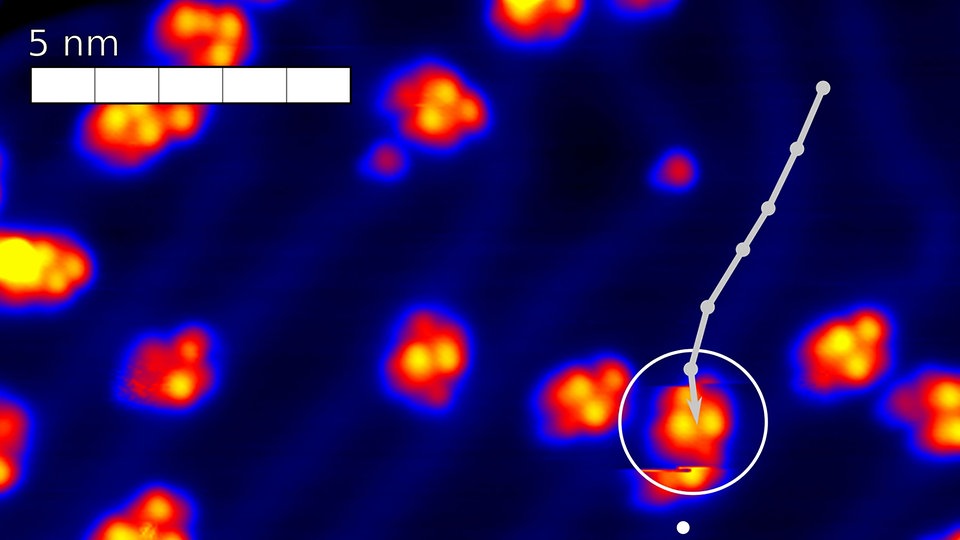The team whose molecule travels the most nanometers (i.e. billionths of a meter, every snail on the other hand is probably something like a supersonic aircraft) on its surface in 24 hours wins. A total of eight teams are registered, including from the USA, Japan, Austria, Spain and Germany. The race is coordinated at the French research center CNRS in Toulouse. A team from Dresden is at the start for Germany. The nano-bolide has a core of azulene, a blue aromatic hydrocarbon used in cosmetics and as a colorant. Hence the team name GAzE, which stands for German Azulene Explorer.
–
Team leader Francesca Moresco controls the Dresden nano car. Your nanocar itself is in Dresden, because the individual molecule cars do not move forward on a common platform, but each on its own. You can’t see them with the naked eye, of course, for that you need a scanning tunneling microscope. In addition, these special microscopes provide the nanocars with the necessary voltage to move. And if a molecule car breaks down, a replacement molecule can be sent into the race, because each team has several nanocars in the pits. And if something should get stuck on the racetrack, the team in Dresden is on site to service the microscope and eliminate faults.
–
What to do with molecules that can be controlled?
So much technology, computing power, organizational effort and coordination of scientific institutions for a race that you can’t even see with the naked eye? What at first, well, sounds like fun actually has a practical scientific background. The development of designed molecules that can be moved in a targeted manner is still in its infancy. “Sometimes the molecules move, sometimes they don’t, and you just don’t yet know why,” explains Matthias Hahndorf from the Center for Advancing Electronics Dresden. Molecular research is still in its infancy here, it’s about basic research.
–
What can become of it still sounds like science fiction today: In the field of medicine, one could imagine that in the future controllable molecules will help to distribute active substances to where they are supposed to go. Or in the field of nano-computing, this technology could be used in data processing without electronics. Where electronics still do the work today, molecules could do it in the future. They could be used in parallel, as in quantum computers. While processes are processed one after the other in today’s systems, processes could be processed simultaneously with nanotechnology. Anywhere in the nano range where something needs to be moved, one could fall back on the designed molecules that can be controlled in different environments and on different surfaces.
–
Team leader Moresco definitely expects a victory. At the first nano race in 2017, the Dresden team took 3rd place with their bolide called Windmühle, consisting of a modest four molecules.
–
You can follow the race live on YouTube.
–
–


